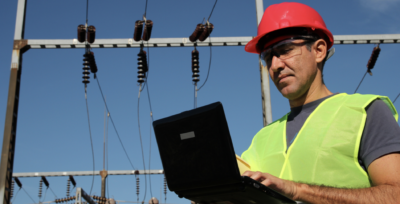Electric cooperatives are increasingly tasked with not only delivering reliable power but also providing high-speed broadband to underserved communities. As they expand into fiber services, the ability to manage and monitor these networks becomes critical. Many co-ops are now looking to integrate IoT devices into their infrastructure to gain real-time insights that support network performance and operational efficiency.
Effective IoT integration is key to building smarter networks, not just for today’s needs, but for long-term growth and service reliability.

Laying the Groundwork for Scalable Network Management
For electric cooperatives that are relatively new to fiber, there’s a growing need to map and track assets accurately from the start. As more IoT devices come online, the complexity of network operations increases. Without a unified system to manage device locations, monitor performance, and capture field activity, valuable insights remain disconnected.
Co-ops need to establish a solid digital foundation for their fiber networks, one that supports real-time asset tracking, seamless IoT integration, and data-driven decision-making. This begins with centralized network mapping and clear visibility into how fiber assets interact with one another.
Rather than adapting legacy systems, cooperatives are in a strong position to design smart, scalable infrastructure from day one. This means choosing tools that can grow with the network, support proactive maintenance, and enable better coordination between field and office teams.
Using Real-Time Insights to Optimise Network Performance
At the heart of effective IoT integration is real-time visibility. Data collected from IoT devices offers a live view of network health, helping teams detect performance issues, spot inefficiencies, and make faster decisions.
Platforms like GEOGRAPH’s CrescentLink make this possible. CrescentLink provides interactive mapping tools that consolidate fiber network data into a single, visual environment. Cooperative teams can monitor asset performance, track work in the field, and gain immediate insights all from one place.
This real-time visibility helps co-ops anticipate demand, plan fiber expansions, and reduce unplanned downtime. Integrating IoT devices into this digital model strengthens the co-op’s ability to respond quickly and scale efficiently as service areas grow.

Streamlining Operations with Centralized Data and Automation
As fiber networks grow, so does the need for efficient, reliable operations. IoT integration isn’t just about gathering more data, it’s about making that data usable. When mapped and managed correctly, IoT data can support automated workflows and reduce manual tasks.
GEOGRAPH’s CrescentLink helps cooperative teams automate network monitoring and streamline asset management. With up-to-date, centralized data, issues can be flagged early and addressed before they cause service interruptions. Routine tasks can be handled proactively, saving time and reducing costs.
By reducing reliance on siloed data or informal processes, co-ops can maintain high service quality and focus on long-term planning. Operational efficiency becomes a natural outcome of better network visibility and smarter tools.
Building a Data-Driven Future from Day One
Electric co-ops have a unique opportunity. As new fiber providers, they’re not tied to legacy infrastructure, they can adopt tools and strategies that support growth from the ground up.
Strategic IoT integration, backed by clear mapping and real-time insights, enables co-ops to deliver reliable broadband while building a flexible, future-ready network. With platforms like CrescentLink, electric cooperatives can manage their networks more effectively, reduce risk, and stay ready for what’s next.




